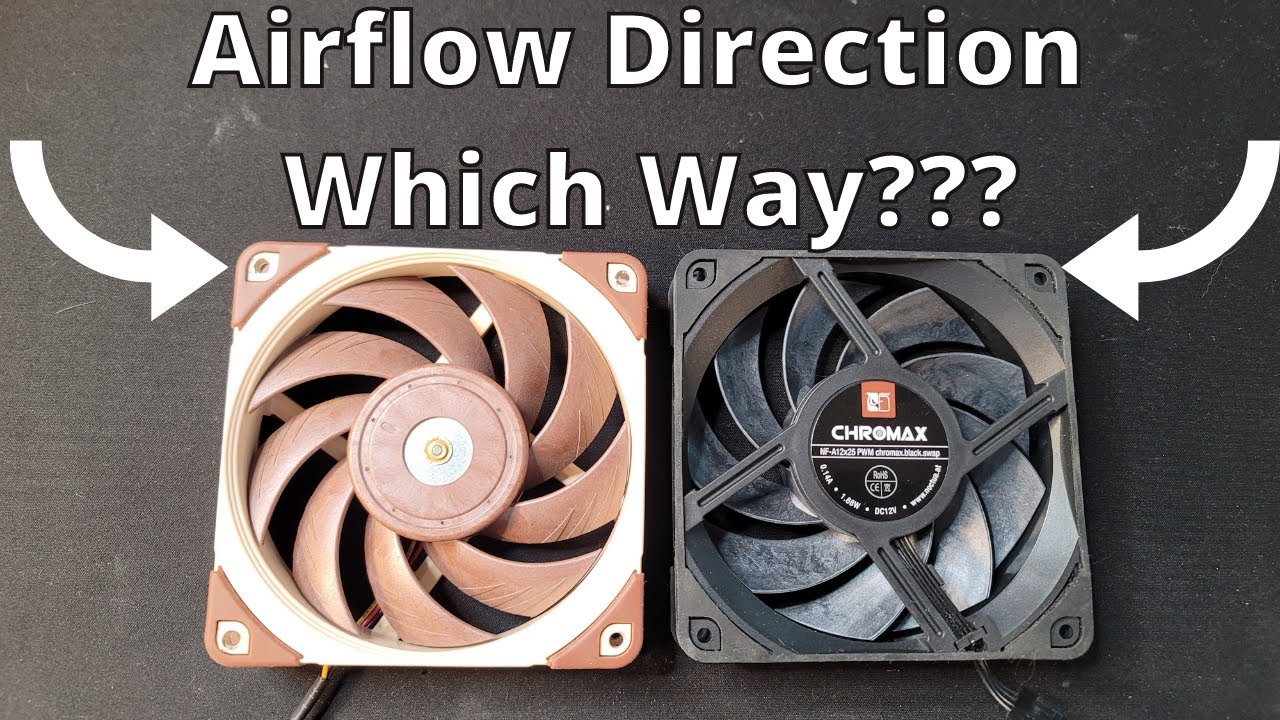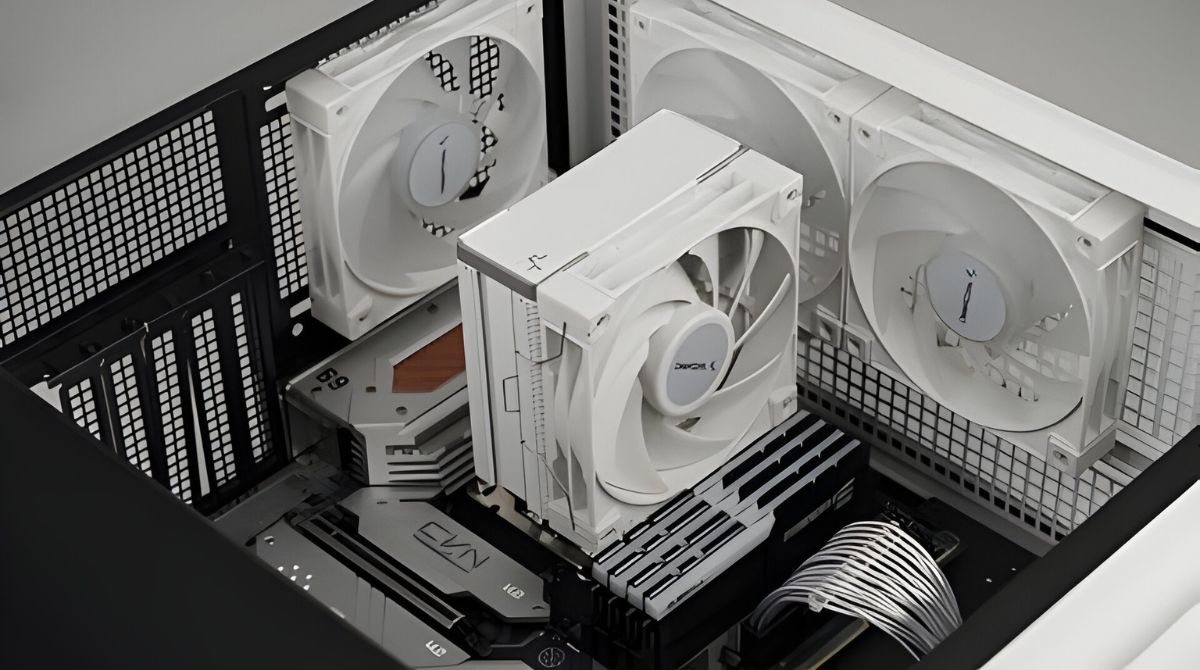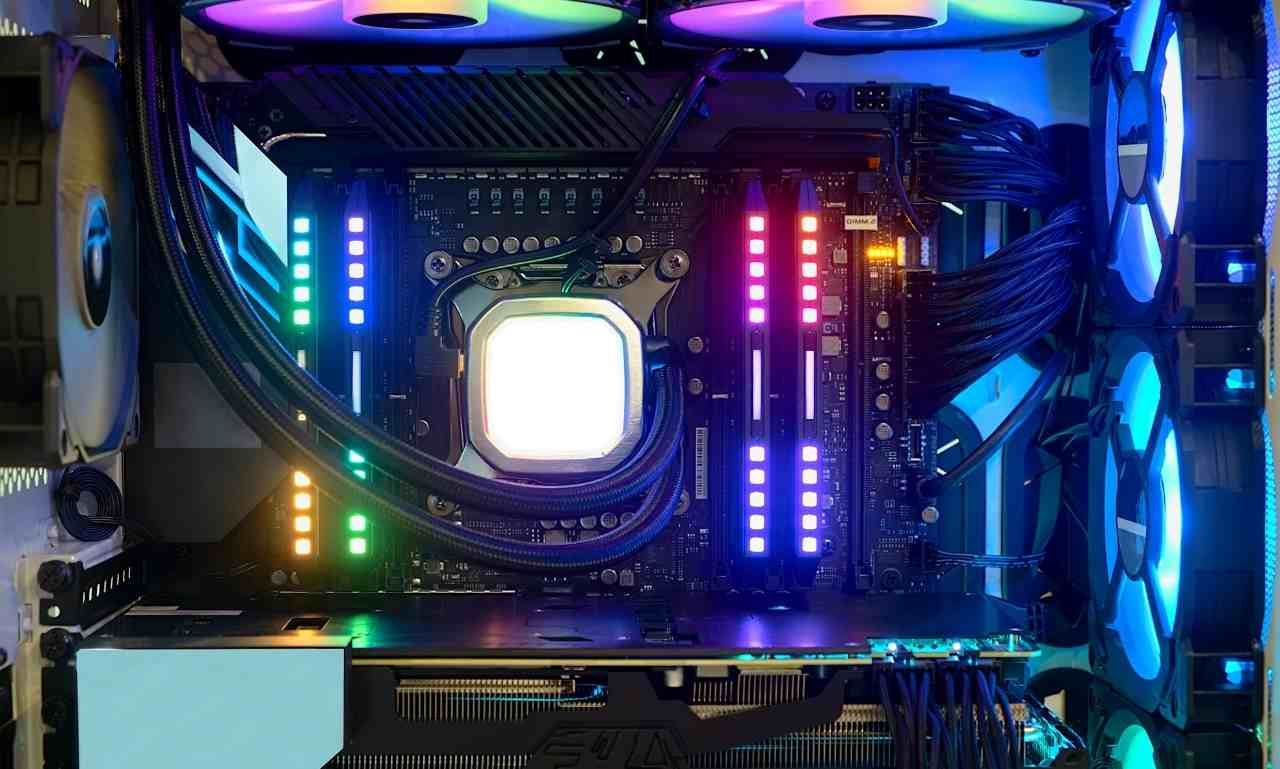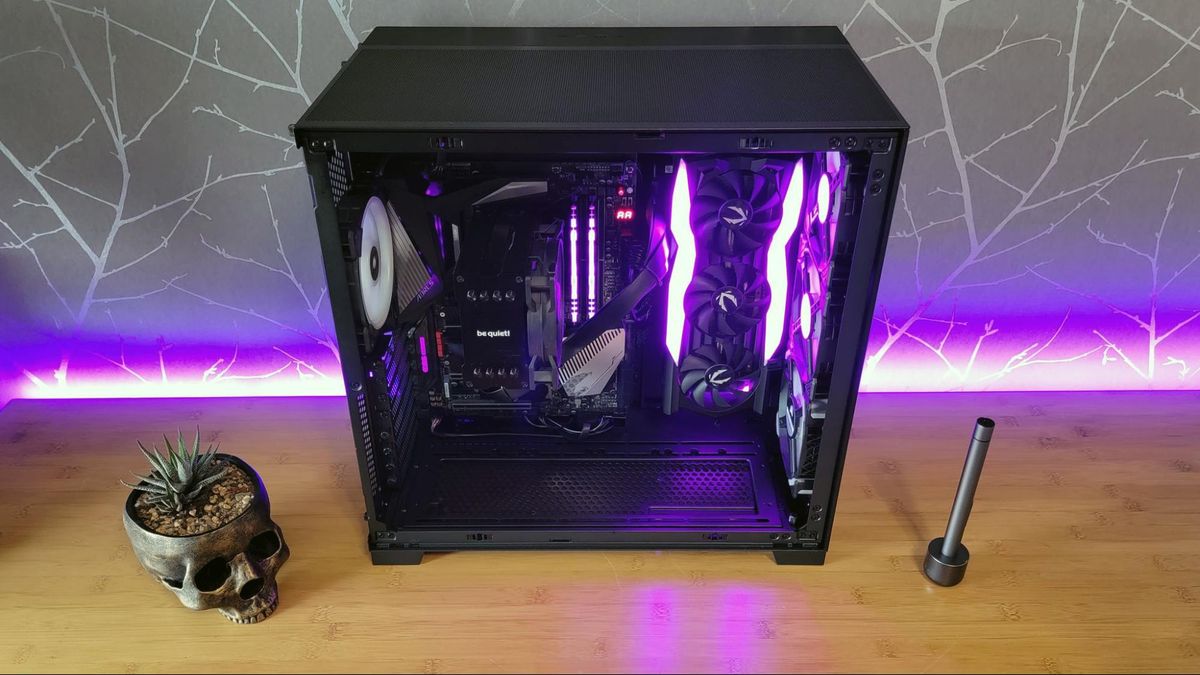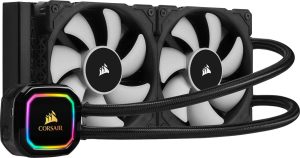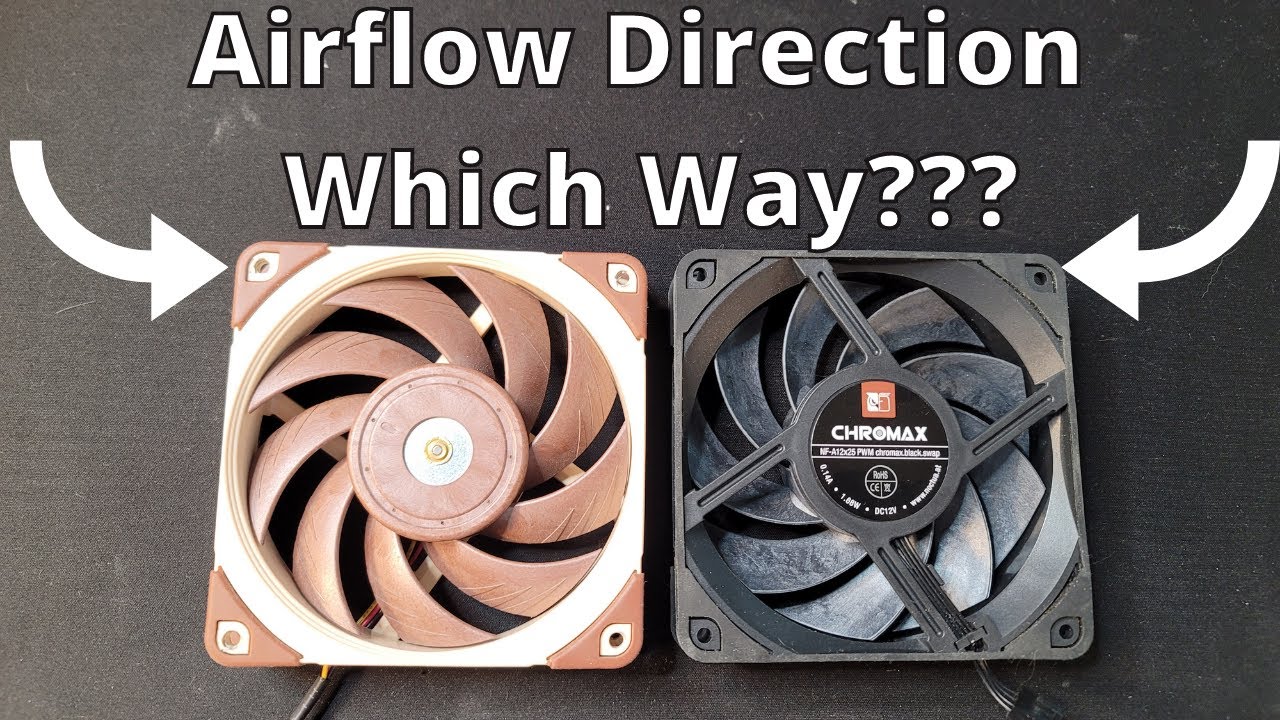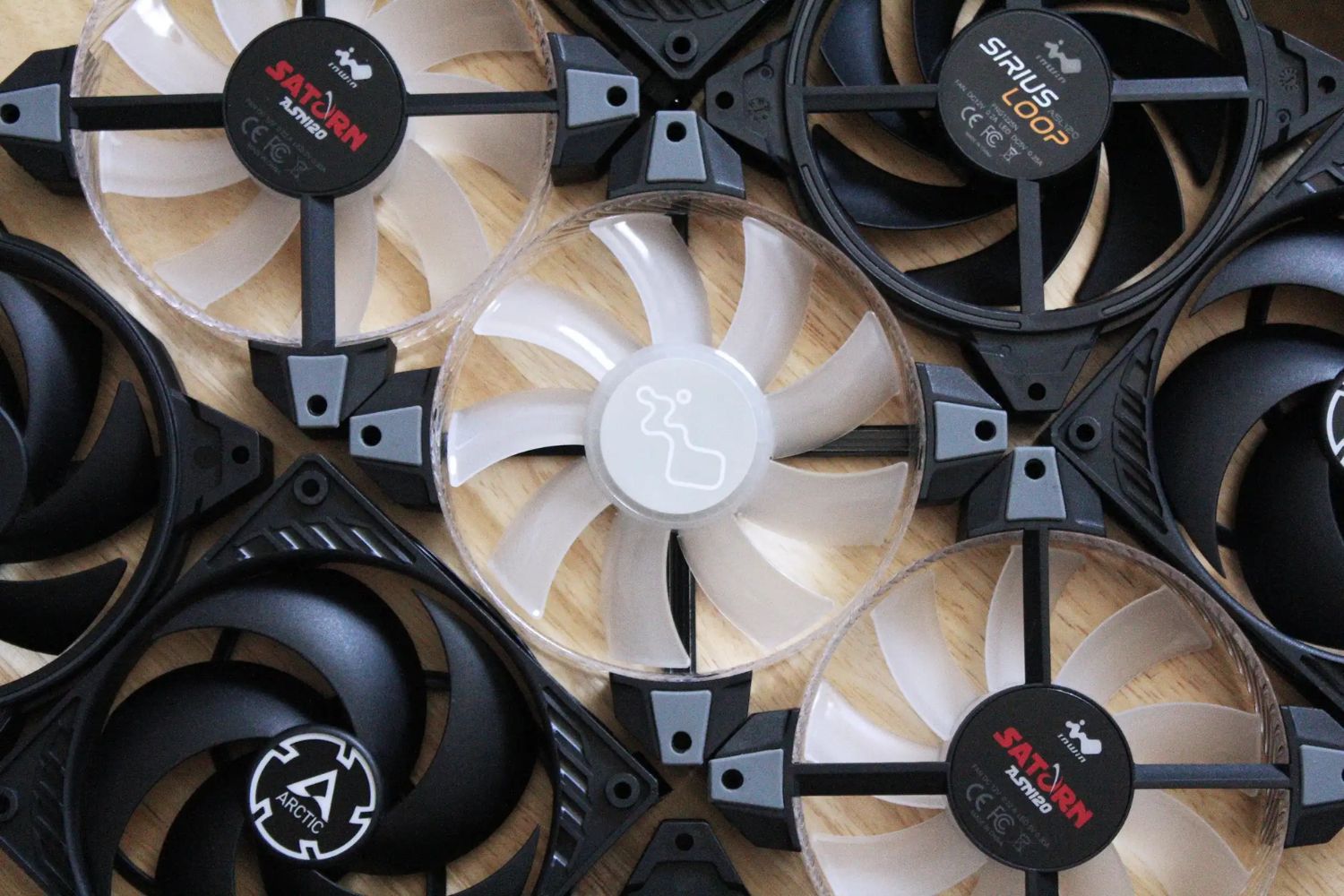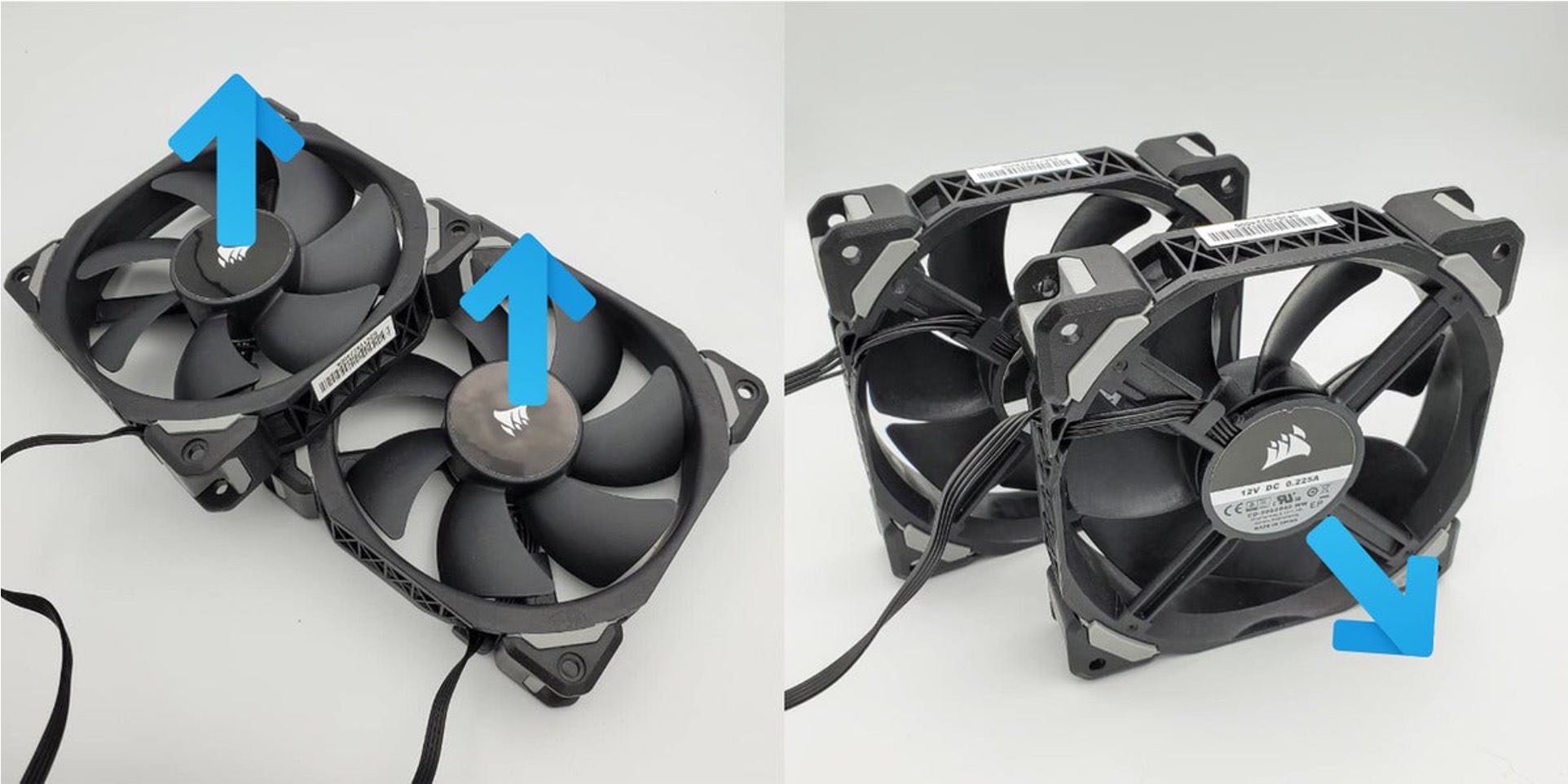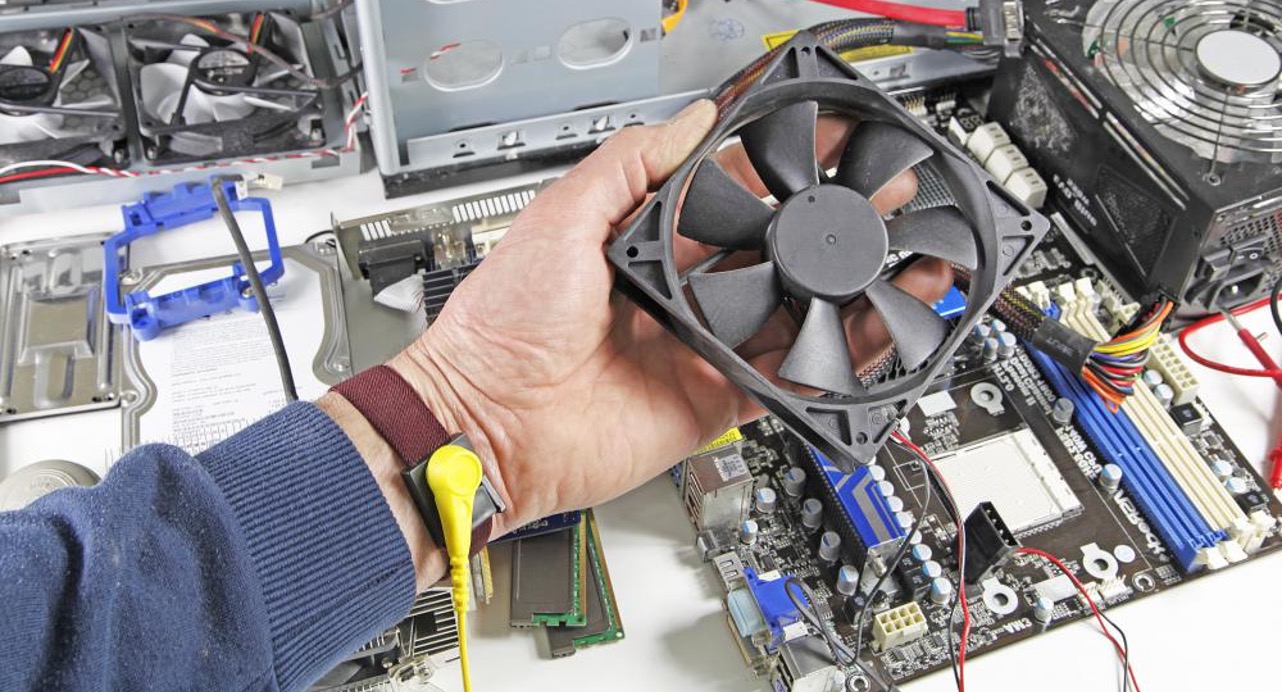Introduction
A CPU fan plays a crucial role in keeping your computer running smoothly. It is responsible for cooling the central processing unit (CPU) to prevent overheating, which can cause system failures and damage to your hardware. Understanding the function and direction of a CPU fan is essential for maintaining optimal performance and the longevity of your computer.
In this article, we will explore the purpose of a CPU fan, how it operates, and which direction it blows. We will also discuss the factors to consider when determining the direction and the benefits of having the fan blow in a specific way. Additionally, we will address some common misconceptions about CPU fan direction and provide insights to help you make informed decisions regarding your computer’s cooling system.
Whether you are a computer enthusiast or a casual user, knowing the ins and outs of CPU fans can help you take better care of your machine and ensure its efficiency and reliability. So, let’s dive in and learn more about the fascinating world of CPU fans and the direction they blow.
What is a CPU Fan?
A CPU fan is a cooling component specifically designed to dissipate heat generated by the central processing unit (CPU) of a computer. The CPU is often referred to as the “brain” of the computer, as it performs essential calculations and processes that allow the computer to function.
During operation, the CPU generates a significant amount of heat. If this heat is not efficiently removed, it can lead to thermal throttling, decreased performance, and even permanent damage to the CPU. This is where the CPU fan steps in.
The primary function of a CPU fan is to extract heat from the CPU and direct it away from the computer’s internals. It accomplishes this by using a spinning impeller, which draws cooler air from the surrounding environment and pushes it across the CPU heatsink, where the heat is transferred from the CPU to the cooler air. The heated air is then expelled from the computer case through vents or additional fans.
CPU fans come in various sizes and designs, including axial fans and radial fans. Axial fans are the more common type and operate by drawing air in parallel to the axis of rotation, whereas radial fans draw air in perpendicular to the axis of rotation. The choice of fan design depends on factors such as the specific CPU and cooling requirements.
Modern CPU fans often feature advanced technologies such as variable speed controls and PWM (Pulse Width Modulation) support, allowing them to dynamically adjust their speed based on CPU temperature and workload. This helps optimize cooling performance while keeping noise levels to a minimum.
Overall, a CPU fan is a critical component of any computer system, as it ensures that the CPU operates within safe temperature ranges, maintaining performance and preventing hardware damage. Without adequate cooling, a computer can experience frequent crashes, system instability, and a shortened lifespan. Hence, it is vital to understand how a CPU fan functions and how to optimize its performance for a reliable computing experience.
Importance of a CPU Fan
A CPU fan is of utmost importance for the proper functioning and longevity of a computer. Here are several key reasons why a CPU fan is essential:
Temperature Regulation: The primary function of a CPU fan is to regulate the temperature of the central processing unit. As the CPU performs complex calculations and tasks, it generates heat. Without proper cooling, the CPU can overheat, leading to reduced performance, system instability, and potential hardware failure. The CPU fan actively removes heat from the CPU, ensuring that it operates within safe temperature limits.
Prevention of Thermal Throttling: When a CPU reaches high temperatures, it may activate a self-protection mechanism called thermal throttling. In this state, the CPU reduces its clock speed to prevent further temperature increase and potential damage. However, thermal throttling has a detrimental effect on performance, as it significantly slows down the CPU’s processing power. A correctly functioning CPU fan helps prevent thermal throttling, enabling the CPU to operate at its designed speed and deliver optimal performance.
Extended Component Lifespan: Overheating can cause long-term damage to computer components, including the CPU, motherboard, and other sensitive circuitry. Continued exposure to excessive heat can result in degraded performance, shortened lifespan, and even complete failure of these components. The CPU fan helps dissipate heat from the CPU and surrounding areas, preventing overheating and ensuring the longevity of the computer system.
Improved System Stability: Excessive heat can lead to system instability, random crashes, and frequent restarts. These issues can be frustrating and disrupt productivity. A properly functioning CPU fan helps maintain a stable operating temperature, reducing the likelihood of these problems and providing a more reliable computing experience.
Noise Reduction: While CPU fans are necessary for cooling, they can sometimes produce noise, particularly at higher speeds. However, modern CPU fans often incorporate technologies to minimize noise levels, such as advanced fan blade designs, rubber dampeners, and PWM speed control. By investing in a high-quality CPU fan, users can strike a balance between cooling efficiency and noise reduction.
Overall, a CPU fan is an indispensable component for the smooth operation and longevity of a computer system. By effectively dissipating heat, the CPU fan ensures optimal performance, stability, and reliability. Therefore, it is crucial to choose a reliable and efficient CPU fan and regularly maintain it to enjoy the benefits of a well-ventilated and cool-running computer.
How does a CPU Fan Work?
A CPU fan works by utilizing a combination of mechanical and airflow principles to cool the central processing unit (CPU) of a computer. Let’s explore the inner workings of a CPU fan:
Heatsink and Thermal Interface Material (TIM): A CPU fan is typically paired with a heatsink, which is a metal component designed to disperse heat away from the CPU. The heatsink is in direct contact with the CPU, and a layer of thermal interface material (TIM), such as thermal paste or thermal pads, enhances thermal conductivity between the CPU and the heatsink, allowing for efficient heat transfer.
Impeller and Bearings: The heart of a CPU fan is the impeller, a rotating blade assembly that generates airflow. The impeller is typically made of plastic and has curved blades that create a low-pressure region behind them, causing air to be drawn in. The impeller is mounted on bearings, which allow it to spin freely with minimal friction and noise.
Fan Motor and Power Source: The impeller is driven by a small electric motor housed within the fan assembly. This motor is powered by the computer’s power supply or motherboard headers, usually through a 3 or 4-pin connector. The fan motor converts electrical energy into rotational motion, causing the impeller to spin and generate airflow.
Airflow Direction: The direction in which a CPU fan blows air is determined by the placement and orientation of the impeller. The airflow direction can be either intake or exhaust, depending on the design and configuration of the CPU fan. Intake fans draw cooler air from the surrounding environment and direct it towards the heatsink and CPU, while exhaust fans expel hot air away from the heatsink and CPU.
Speed Control: Many modern CPU fans feature variable speed controls, allowing them to adjust their rotational speed based on the CPU temperature. This is typically achieved using Pulse Width Modulation (PWM), where the fan receives signals from the motherboard to increase or decrease its speed. Slower fan speeds result in quieter operation, while faster speeds provide enhanced cooling when needed.
Cooling Efficiency: The efficiency of a CPU fan depends on factors such as the size and design of the fan, the speed at which it operates, the quality of the thermal interface material, and the overall cooling system of the computer. Adequate airflow through the heatsink helps dissipate heat effectively, maintaining optimal CPU temperatures.
In summary, a CPU fan operates by utilizing a rotating impeller, a heatsink, and thermal interface material to regulate the temperature of the CPU. By drawing cool air over the heatsink and expelling hot air away from the CPU, the fan prevents overheating and ensures the proper functioning of the computer system.
Which Direction Does a CPU Fan Blow?
The direction in which a CPU fan blows air depends on various factors, including the fan’s design, installation orientation, and the desired airflow pattern within the computer case. Generally, CPU fans can blow air either towards the CPU (intake) or away from the CPU (exhaust).
Intake Configuration: In an intake configuration, the CPU fan blows cool air towards the heatsink and the CPU. This setup is often used when there are other fans or vents strategically placed to exhaust the hot air from the computer case. The intake configuration ensures that fresh, cool air is actively drawn across the CPU, aiding in the cooling process.
Exhaust Configuration: In an exhaust configuration, the CPU fan blows air away from the CPU and the heatsink. This setup is useful in cases where the airflow pattern is designed to exhaust hot air from the case. It relies on other fans or openings in the case to draw in fresh, cool air to passively cool the CPU.
The specific direction in which a CPU fan blows air can typically be identified by examining the fan’s frame or the direction of its impeller rotation. Most fans have an arrow or marking on the frame indicating the direction of airflow. Moreover, the orientation of the impeller blades can also provide a clue about the airflow direction: if the blades are curved towards the fan’s motor, it is likely an intake configuration, while blades curved away from the motor indicate an exhaust configuration.
It is important to ensure the proper installation of a CPU fan according to the desired airflow direction. Installing it incorrectly can disrupt the intended airflow pattern and compromise cooling efficiency. Additionally, maintaining a clean and dust-free environment around the fan and its associated components is crucial to prevent airflow obstruction and ensure optimum cooling performance.
Ultimately, the decision on which direction to install a CPU fan depends on the specific cooling requirements and layout of the computer system. Understanding the intended airflow pattern and configuring the CPU fan accordingly can contribute to efficient cooling and the overall temperature management of the computer.
Factors to Consider When Determining the Direction
When setting up the direction of a CPU fan, several factors should be considered to ensure optimal cooling performance and efficient airflow within the computer case. Here are some key factors to take into account:
Computer Case Layout: The layout of your computer case plays a vital role in determining the direction of the CPU fan. Take note of the positions of other fans, vents, and mounting points available within the case. By strategically positioning intake and exhaust fans, you can create a balanced airflow that effectively removes hot air and brings in cool air. Consider the overall goal of your system’s cooling setup and the positioning of other components that generate heat.
Heat Generation Components: Identify the primary sources of heat within your computer system. In addition to the CPU, factors such as the graphics card (GPU), memory modules, and hard drives can contribute to heat buildup. Ensure that the direction of the CPU fan takes into account the positioning of these components to optimize overall cooling efficiency.
Manufacturer Recommendations: Check the CPU and motherboard manufacturer’s documentation and guidelines for any specific recommendations on the direction of the CPU fan. Some motherboards or CPU coolers may have specific airflow requirements or installation instructions provided by the manufacturer. Following these recommendations can help ensure compatibility and proper cooling operation.
Case Fan Configuration: Consider the overall fan configuration within your computer case. If you have multiple fans, it is important to create a balanced airflow system that promotes efficient cooling. The direction of the CPU fan should fit within the larger airflow strategy of the case, working harmoniously with other fans to maintain consistent and effective cooling.
CPU Cooler Design: The design of the CPU cooler, including the heatsink and fins, can influence the direction of the CPU fan. Some coolers are designed specifically for either intake or exhaust configurations. Consider the orientation and design of the fins and ensure that the direction of the CPU fan aligns with the intended airflow pattern of the CPU cooler.
Personal Preference and Experimentation: Personal preferences and individual system configurations can influence the direction of the CPU fan. Experimentation may be necessary to find the most effective setup for your specific computer case and cooling needs. Monitor temperatures and performance under different fan configurations to determine which direction yields the best results in terms of cooling efficiency and overall system stability.
Remember that maintaining proper airflow and temperature management is crucial for the longevity and optimal performance of your computer system. Considering these factors and fine-tuning the direction of the CPU fan can help create an efficient cooling setup that maximizes airflow and effectively removes heat, contributing to the overall stability and lifespan of your computer.
Benefits of Having a CPU Fan Blow in a Specific Direction
The direction in which a CPU fan blows can have several benefits when properly configured. Here are some advantages of having a CPU fan blow in a specific direction:
- Optimal CPU Cooling: By directing airflow towards the CPU, an intake configuration allows for direct cooling of the CPU and the surrounding components. This helps to effectively dissipate heat generated by the CPU, keeping it at optimal operating temperatures. Proper CPU cooling enhances performance, prevents thermal throttling, and extends the lifespan of the processor.
- Efficient Heat Dissipation: When the CPU fan blows air in the same direction as the exhaust fans or vents within the computer case, it promotes smooth airflow and efficient heat dissipation. This ensures that hot air is effectively expelled from the case, reducing the risk of heat buildup and maintaining a cooler overall system temperature.
- Reduced Component Heat Soak: Heat generated by the CPU can impact adjacent components, such as memory modules or VRM (Voltage Regulator Modules). By blowing cool air directly towards the CPU, an intake configuration helps mitigate heat soak into neighboring components, improving their longevity and stability.
- Enhanced Cooling Potential: In certain cases, an intake configuration may offer more cooling potential compared to an exhaust setup. Drawing cooler external air directly towards the CPU can provide a greater temperature differential, resulting in improved cooling efficiency and lower CPU temperatures.
- Noise Reduction: In an intake configuration, the CPU fan can take advantage of the cooler ambient air outside the case, potentially reducing the overall fan speed. Lower fan speeds generally help to minimize noise levels, providing a quieter computing experience without compromising on cooling performance.
It’s important to note that the benefits of having a CPU fan blow in a specific direction may vary based on individual system configurations, case design, and cooling requirements. Experimentation and monitoring of temperatures are often necessary to determine the most effective configuration for optimal cooling performance and system stability.
By understanding the advantages of a specific CPU fan blowing direction, you can make informed decisions about configuring your computer’s cooling system, enhancing the overall efficiency and reliability of your system.
Common Misconceptions about CPU Fan Direction
There are several misconceptions and myths surrounding the direction in which a CPU fan should blow. It’s important to debunk these misconceptions to ensure proper cooling and avoid unnecessary mistakes. Here are some common misconceptions:
- Blowing Air Opposite to CPU: One common misconception is that the CPU fan should blow air opposite to the CPU to “push” hot air away. However, this is incorrect. The primary goal of the CPU fan is to cool the CPU, so it should blow air towards the CPU to efficiently dissipate heat.
- CPU Fan Determines Overall Case Temperature: Another misconception is that the direction of the CPU fan solely determines the overall temperature inside the computer case. While the CPU fan is crucial for CPU cooling, it is just one component in the overall cooling system. The case temperature is influenced by other factors, such as additional fans, the case design, and proper airflow throughout the system.
- No Difference between Intake and Exhaust for CPU Cooling: Some believe that there is no significant difference in CPU cooling between intake and exhaust configurations. However, the direction of the CPU fan can impact the specific cooling strategy, heat dissipation, and overall system temperature. Choosing the appropriate configuration based on the specific needs and system layout is essential for optimal cooling performance.
- One Direction Fits All: Many assume that a specific fan direction applies universally to all CPU and case configurations. However, CPU fan direction should be chosen based on individual system components, case layout, and overall cooling strategy. It’s essential to consider the specific needs of your system and customize the fan direction accordingly.
- Faster Fan Speed Means Better Cooling: Another misconception is that higher fan speeds automatically result in better cooling performance. While increased fan speed can provide better cooling under certain circumstances, it is important to strike a balance between cooling efficiency and noise level. Some modern CPU fans can adjust their speed based on CPU temperature to maintain an optimal balance between cooling performance and noise reduction.
It’s crucial to rely on accurate information and avoid falling for common misconceptions when it comes to CPU fan direction. Understanding the true purpose of a CPU fan, considering the specific needs of your system, and adopting a holistic approach to cooling optimization are key to achieving efficient and effective cooling for your computer.
Conclusion
The direction in which a CPU fan blows air is a critical aspect of computer cooling. It plays a significant role in maintaining optimal CPU temperatures, preventing thermal throttling, and ensuring the longevity of computer components. Understanding the purpose and operation of a CPU fan is essential for setting up an effective cooling system.
In this article, we explored the role of a CPU fan in dissipating heat from the central processing unit (CPU) and the benefits of having the fan blow in a specific direction. We discussed the factors to consider when determining the direction, such as the computer case layout, heat generation components, manufacturer recommendations, and personal preferences. By paying attention to these factors, one can maximize cooling efficiency and maintain an appropriately balanced airflow within the system.
We also debunked common misconceptions about CPU fan direction, emphasizing the importance of blowing air towards the CPU, understanding that the CPU fan alone does not determine the overall case temperature, and the need for customization based on individual system requirements.
By utilizing a properly configured CPU fan and an effective cooling setup, users can achieve optimal cooling performance, improved system stability, reduced noise levels, and prolonged component lifespan. Regular maintenance, such as cleaning dust and ensuring proper airflow, further enhances the cooling efficiency of the CPU fan.
In conclusion, understanding the purpose, function, and direction of a CPU fan empowers users to make informed decisions about their computer cooling system. By considering the specific needs of their system, they can configure the CPU fan in a way that maximizes cooling efficiency and promotes a reliable and efficient computing experience.







